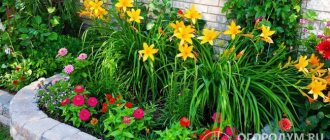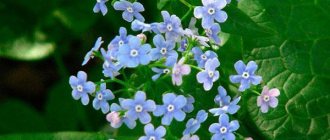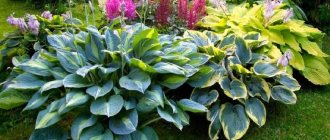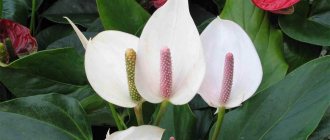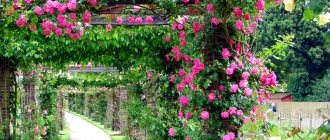Roses are royal marvelous flowers for all times. There are rare flowers that look like roses, they are also beautiful and charming. When you see them, an association with a rose immediately arises, but, of course, there are differences, there are no thorns - protection and symbol that belong only to one queen - the rose.
Similar flowers are very similar to roses and are attractive to gardeners: peonies, kalanchoe, gardenia, primrose, ranunculus, geranium, double balsam, adenium, begonia, eustoma. They have no thorns and in their own way they are all beautiful and charming.
Ranunculus - a flower similar to a rose
The Asian buttercup, with its various shades, became known for the first time in eastern countries since the 16th century. The beautiful flower is a worthy competitor among some garden favorites. It is similar to peony and rose, resists many diseases, and is easy to care for.
Depending on the variety, the color can be pink, white, crimson, red, yellow, orange . When blooming, the flowers reach up to 7 cm in diameter, are very similar to small roses, and form several buds when they reach a height of 30-35 cm.
The flowers last a long time, do not fade, and after cutting they combine in an original way with other flowers in bouquets. Ranunculus can decorate any garden; it grows well at home in pots, but is heat-loving and quickly fades in the cold. Seeds or bulbs directly into the ground are suitable for planting.
general information
Ranunculus came to us from Asia Minor, and the name of the beautiful flower was given by the ancient scientist Pliny. Funnily enough, the plant is named after frogs due to the fact that a number of varieties prefer marshy areas.
The popularity of ranunculus in Europe has waxed and waned in waves since the sixteenth century. The height of the bush varies from 20 to 100 cm, and the shoots are always quite powerful and strong to withstand the weight of large inflorescences.
Ranunculus offer an impressive variety of flower sizes, shapes and shades. In addition, they can even be planted as cut flowers, and in this form they stand well for up to 2 weeks. Choose simple, double, semi-double and even double-double ranunculus.
Photo: plantsam.com
Hibiscus - Chinese rose
Hibiscus, or Chinese rose, looks very much like a rose. This plant is not only an indoor plant, but there are also hybrids that are preferably grown in the garden. The flower is perennial and forms luxurious bushes with buds in the second year after planting. It blooms like an exotic plant, it is impossible to look without admiration.
The homeland of hibiscus is Asia, but today the plant grows beautifully in all countries of the world. The Chinese rose is compared to a symbol of beauty, sophistication, and femininity.
The flower has 5 petals, which corresponds to the 5 commandments of Islam. Hybrids have fully adapted to our conditions and climate. They grow in bushes, like roses, and are not afraid of frost, but they need to be covered for the winter, otherwise the roots and leaves may freeze.
There are many buds blooming on each branch, and the flowering duration is only 1 day, but new buds immediately bloom, which makes the flowering simply continuous, until the middle - end of October.
Hibiscus of rich pink shades grows up to 2 meters in height, the diameter of the flowers is 23-25 cm. The bushes of this plant are a wonderful decoration for any garden.
Eustoma
Eustoma is a worthy competitor to the Queen Rose. The touching, delicate flower is loved by gardeners. The plant's homeland is South America, but today there are many hybrids. Varieties with cream, red, white, apricot, and lilac petals are known.
The flowers smell like roses and are easy to confuse. The flower has a wide geographical distribution, so there are several names: Irish eustoma, Japanese, French.
If you properly care for the plant, the inflorescences will be terry, juicy and luxurious. Flowers reproduce by seeds through. There are tall varieties 60-90 cm - hybrids, they are branched like a bush, and also dwarf. Six months after sowing, you can admire the luxurious, blooming inflorescences.
Flowers grow both indoors and outdoors. The composition of the soil is sand and peat, but you need to sow at a temperature not lower than 23 degrees, until the first shoots appear you need to keep it under film. After the seedlings have become stronger, the seedlings are picked.
After the true third leaf appears, it is transplanted into a flowerbed if necessary. The plant loves light; when grown indoors in the summer, it should be taken out to the balcony or outside more often.
Twitterguru
Long, arrogant stems, delicate and fragrant flowers, impeccable perfection of the forms of velvety petals and sharp thorns that reliably protect this quivering beauty from strangers, rough touches - all this is a rose, the queen of flowers. It is not surprising that people, trying to describe the beauty of other flowers, often try to compare them with the magnificence of a rose.
It is amazing and unique, but there are several plants that nature, by its own way or whim, endowed with flowers similar to roses . These plants include:
- some varieties of geraniums, primroses, tulips and gardenias,
- adeniums;
- terry balsams;
- Chinese rose (hibiscus);
- peonies;
- Ranunculus.
Possessing no less attractiveness than classic roses, these flowers are thornless, are often much easier to care for and are not so demanding on the soil. Let's find out what the names of the flowers are , surprisingly similar to roses. There are a lot of such twin plants in ornamental gardening, so we will focus on the most famous species. We'll talk about the similarities and differences between plants and breeding features. You can buy seeds and seedlings of decorative flowers here.
Let's start listing the names and descriptions of flowers similar to roses with a guest from Asia Minor.
Buttercup asiatica
Ranunculus (Ranunculus asiaticus, Asian buttercup) is an unpretentious and very attractive low (up to 40 cm) branch , similar to a rose , brought to Europe from exotic Turkey back in the 16th century. For a very long time, ranunculus was extremely popular among flower growers, then it went out of fashion and experienced a fairly long period of undeserved oblivion.
Nowadays, these lovely colorful flowers have returned to flower beds and the hearts of gardeners and landscape designers. One of the main advantages of ranunculus is its exceptional unpretentiousness and resistance to diseases and pests, while in beauty it can be a worthy competitor to many more well-known flowers.
When opened, ranunculus flowers reach 7 cm in diameter and in its shape the plant really is a garden flower very similar to a rose , as well as a double poppy. Depending on the variety, flowers can be of a wide variety of colors - from yellow and orange to bright purple and crimson. On each stem up to 30-35 cm long, several buds bloom at once.
Due to the fact that ranunculus retain freshness for a long time after cutting, they are increasingly used in bouquets, including wedding ones. Asian buttercups can be the best decoration in the garden, but they also feel great in a pot on a warm terrace - the main thing is not to experience extreme cold, which this delicate plant cannot tolerate. rose- and peony-like flower propagates by bulbs and seeds; there are both annual and perennial varieties.
Hibiscus
Hibiscus (Hibiscus rosa-sinensis Linn, Chinese rose) is a bush flower , surprisingly similar to a rose without thorns , which is why it got its name. It is a fairly popular indoor plant, but there is also a garden variety of it, which within a year after planting grows into a powerful bush strewn with buds.
The homeland of hibiscus is the warm and mysterious East, where beautiful red flowers are revered as the living embodiment of the commandments of the Buddha, but as a result of many years of work by breeders, varieties of Chinese roses have appeared that feel good even in the rather harsh Russian climate, if you give them enough attention before wintering and cover the root system of fallen leaves and wood chips.
In addition to the traditional red hibiscus, there are rose-like varieties with flowers in different shades of pink. And thanks to the crossing of red, pink and holly varieties of the plant, a unique hybrid with especially lush flowering was obtained: on each branch it has up to fifty buds, each of which fades in a day, but thanks to their large number, hibiscus blooms for months! This plant will be a worthy decoration for any garden and flower bed. Delicate hibiscus flowers, similar to roses , will not leave anyone indifferent!
Eustoma
Eustoma is a surprisingly delicate and touching flower, also called the Japanese rose for its resemblance to the queen of flowers, although the plant was brought to Europe not from the land of the rising sun, but from Central and South America. Nowadays, thanks to the persistent work of breeders, there is a wide range of varieties of rose-like eustoma in a wide variety of colors: white, cream, lilac, purple, apricot, red, and there are also varieties with two-color flowers. Eustoma flowers so similar to roses in appearance and aroma that they are easily confused.
Eustoma bushes can be either dwarf or tall, the flowers are collected in lush inflorescences. Eustoma is propagated by seeds, which are planted in pots filled with a light mixture of sand and peat. The seedlings of these flowers also similar to rose seedlings . Low bushes feel great in a room or veranda, the main thing is that they have enough light; eustomas are very light-loving plants.
Begonia
Begonia (Begonia) is another flower that is like two peas in a pod .
An exceptionally unpretentious and profusely flowering plant. Begonias include almost a thousand varieties of both decorative flowering and decorative foliage plants; varieties with large flowers similar to roses . The shades of the buds can be very diverse: there are varieties with white, yellow, cream, bright red, pink, and burgundy flowers. Gardeners are especially attracted by the unpretentiousness of begonia: it grows well both in the sun and in the shade, it is undemanding to the composition of the soil - the main thing is that the soil is not too heavy and water does not stagnate in it. Begonias usually grow in an apartment, but in the summer they feel great in a flowerbed or in a flowerpot, and even on the side of the road.
The fact that begonias are flowers that are surprisingly similar to roses without thorns is noted by all lovers of ornamental gardening.
Geraniums
Geranium (Geranium) is a popular houseplant brought to Europe from Africa.
Breeders have developed varieties of geraniums with large flowers, similar to roses in white , red, pink, and there are varieties with multi-colored - two-, three-color flowers. Geranium is considered a talisman flower that preserves peace and happiness in the house where it grows, and varieties with large white flowers bring family well-being and healthy offspring.
In addition, due to the high content of essential oils and phytoncides in the plant, geranium improves the health of indoor air and prevents the proliferation of pathogenic bacteria.
Caring for geraniums is simple: the plant does not like bright sun and too much watering, otherwise it is unpretentious. Geraniums are propagated by cuttings and sowing seeds, which are sown in light soil and fed periodically as the seedlings grow.
Balsam
Terry balsam (impatience or impatience) is a popular plant due to its exceptional unpretentiousness, which can be found on the windowsills of apartments and offices, and in the summer - in flower beds and flower beds.
Balsam blooms with small flowers similar to tea rose flowers - white, pink, cream, scarlet, burgundy, there are also varieties with two-color flowers, while the trunk and leaves can be either the usual green or deep burgundy color.
Balsam loves light, loose soil, moderate frequency of watering, and tolerates temporary drought quite steadfastly, but at the same time sheds its leaves and buds. Loves spraying and requires careful handling: balsam stems are fragile and break easily. It propagates very easily - by cuttings and sowing seeds. This is the most fragile and homely of all rose-like flowers .
Gardenia
Gardenia (Gardenia) is a flower very similar to a rose , just as majestic, and almost as capricious. Contrary to popular belief, the plant is named not from the English word garden, but from the consonant (“speaking”) surname of the American botanist Garden.
It differs from a rose in aroma - it is close to the pure and ringing scent of jasmine, which is why there is also the name “gardenia jasmine”.
There are several subspecies of gardenia with tall, medium-tall and dwarf plants. Gardenia flowers are snow-white, later becoming light cream.
Today, gardenias can only be found in the wild in China and Japan, where they bloom from July to October. Cultivated varieties of gardenia prefer a room without direct sunlight, but quite bright (if necessary, you can illuminate the plant with a lamp). Gardenia likes to be watered regularly, once a month - with acidified water.
Desert Rose
Terry adenium (desert rose) - belongs to the genus of succulents, distinguished by bright red, white, pink flowers with a variegated pattern on the petals.
Blooms all summer and early autumn. In the wild - in southern Africa - adeniums can reach 10 meters in height, but cultivated varieties are much more modest - they usually grow to a maximum of 35-40 cm.
Owners of adenium need to remember that the sap of the plant is poisonous, and if there are children or pets in the house, they should not have direct access to the flower.
The plant tolerates drought well due to the moisture reserve in the stems and fleshy leaves. In spring, summer and early autumn, adenium is more comfortable outdoors; it should winter indoors.
This is undoubtedly the most exotic of all rose-like flowers .
Primrose perennial
Terry primroses (primulae) are perennial hybrid varieties of primroses with large double flowers very similar to roses .
These plants feel equally comfortable both indoors and outdoors; they are unpretentious and are propagated by seeds or by dividing the bush.
In a slightly shaded place, in nutritious light soil, perennial primrose can bloom for up to 4 months, and what is especially important is that such flowering begins as soon as the snow melts: primrose is one of the primroses that begin to decorate flower beds and flower beds before anyone else, while other plants are still are in hibernation.
Conclusion
Of course, it is difficult to compete with the noble Rose Queen. But there are many flowers no less attractive than her, with their own unique qualities, worthy of taking a place in a flower garden, rock garden, on a veranda or windowsill. By cultivating street and indoor flowers similar to roses , you can exquisitely diversify your botanical collection and learn a lot about the flora of the globe and floriculture traditions in different countries of the world.
But in this new article you can read about the annual dahlia - how to grow it and how to store the seed.
Begonia
Begonia is one of the most common house flowers, a competitor to roses and a favorite of gardeners. The plants bloom well and are easy to care for. Begonia is native to Africa and South America; there are more than 900 species.
The sizes are different: miniature and giant bushy growing up to the ceiling in the room. Caring for begonias is easy. The main thing is that the soil is moist and water does not stagnate. To do this, it is necessary to make drainage.
New types of geraniums
Geranium does not have thorns, but is very similar to a rose. Grows beautifully on a balcony, window sill, flower bed. It is believed that by planting a flower near the house, there will be no discord and bad weather in the family, and white inflorescences will increase the fertility of the family. Geranium is not only beautiful, but also creates a favorable microclimate in the house.
The birthplace of the flower is Africa. More than 280 species are known. Double inflorescences with many petals are comparable to rosebuds; they do not fully open. Geraniums should not be watered abundantly and kept in direct sunlight, but the soil should not be allowed to dry out.
To allow air to penetrate, it needs to be loosened more often and fed with fertilizers. It is advisable to water with warm water.
Terry balsam
People call balsam Vanka wet. Flowers, like roses, are very similar to them. Plants of short stature are perfect for landscaping the area; they bloom profusely and grow on windowsills even in winter. Can be planted by seeds or cuttings in open ground. Thanks to the varied shades, planting several varieties in one flower bed can create real floral splendor.
There is no need to water frequently, but it is necessary to loosen periodically. There should be no drying out or compaction of the soil. Plants love shade and grow well under trees, in flower beds, as well as in vases, pots, baskets, and containers. Flowering is generous. There is no need to oversaturate the soil with moisture, otherwise the stems will become brittle and brittle.
In landscape design
Ranunculus is often grown in flower beds or along garden paths. Can be used as an independent plant or in combination with other crops. Looks good among evergreen shrubs.
Strong watermelon seedlings: 6 useful growing tips
Also, buttercup will be an ideal option for decorating a balcony or veranda. Potted buttercups can be placed in gazebos.
Gardenia
The aroma of gardenia resembles jasmine, and in appearance, of course, a rose. The plant is majestic, but loves warmth, affection and care. Depending on the species, it grows dwarf or tall in size. The flowers are arranged in pairs, but are quite large, cream and white in shades with dark green shiny leaves.
Flowering occurs in mid-summer and until October. Grown small bushes up to 0.5 meters in height will become a real decoration of any interior. The bushes do not tolerate the scorching rays of the sun, but a lack of light will lead to stunted growth.
It is better to place the flowerpot on the southwest side. If there is insufficient lighting, you need to place a fluorescent lamp nearby.
The flower should be watered regularly, but moderately, 1-2 times a month with the addition of citric acid. The soil should be slightly acidic. It is not recommended to spray flowers.
Content requirements
Place
When growing a mini-rose, you must provide it with good air exchange, so the best place for its location would be a balcony. You can put a pot of roses on the windowsill, but you will need to open the window often. In summer you can take the flower with you to the dacha.
Temperature
During flowering, which occurs in the summer, the plant needs fresh air, so try to place the flower on a balcony or loggia whenever possible.
Remember that roses do not like extreme heat, so try not to let the soil overheat. Choose light-colored pots, and in the hot season, wrap the flower container with reflective material.
Room temperature will be ideal for potted roses. Cold air is also harmful to it, so make sure that on cold days there is no blowing from the windows, and if you use a fan or air conditioner, place it away from the plant.
Humidity
During the development and flowering of a rose, it is necessary to spray it. You can give her a warm shower once a week.
In any case, you cannot ignore moisture, as this can lead to drying out of the leaves or, even worse, the appearance of pests (more on them below).
Lighting
The dwarf rose is a light-loving plant, therefore, it needs good lighting. But the scorching summer sun can damage the flower, so try to protect it from direct sunlight, especially at midday. In the morning and evening hours, the sun is not dangerous for the rose.
Adenium terry
Adenium is considered a rose that grows in the desert. Flowers can decorate any greenhouse or garden. This is a shrubby succulent, the leaves are huge, olive in color, and the flowers are elegant, with many different colors: white, red, with shimmer.
The appearance of buds begins in early June and continues until autumn. They delight the eye with their luxury and splendor. The homeland of adenium is Central and South Africa.
When planted in the ground, the stems can reach up to 10 meters. At home, the height does not exceed 35-40 cm. Adenium blooms marvelously, many owners try to grow it in their garden plots, but the juice is poisonous, the plants must be handled with care.
The plant is adapted to dry climates. The leaves absorb water and can last for a long time without any recharge. After watering, the plant begins to grow rapidly and bloom.
.
In summer it’s good to keep it outside; fresh air speeds up the development process, but you don’t need to water it often. The leaves can be lightly sprayed, but water should not get on the inflorescences.
Pest and disease control
If the ranunculus drops flowers, becomes covered with mold or dark spots, the reason is most likely an excess of moisture. It is better to remove plants that are severely damaged by the fungus, and treat the rest with fungicides and allow them to dry. If the buds become smaller and die, and the leaves dry out, then the flower, on the contrary, does not have enough moisture.
Like many tuberous plants, ranunculus suffer from pests that like to feast on the roots. They are difficult to notice, but can be prevented by thoroughly disinfecting the soil and seed at the beginning of the season.
The most terrible enemy is root nematodes and their larvae. They leave formations on the roots - galls. The roots of such ranunculus need to be soaked in hot water up to 60 degrees for about half an hour. Occasionally, aphids or spider mites are encountered, but in this case insecticides help well.
Photo: insectvred.ru
Succulents (85 photos): types, care features
Hellebore
The plant is poisonous, but is famous among the people for its healing properties. Frost-resistant black rose is a perennial evergreen plant, reaching a height of 30 cm with good growth, suitable for growing indoors. The roots grow long and creeping, so the hellebore pot must be high enough.
A mixture of garden soil and clay is suitable as soil. To remove moisture, you need to put drainage at the bottom of the pot. The plant grows well in a cool, shaded location. After cutting, the hellebore stands in water for a long time, up to 1.5 weeks, but the water needs to be changed periodically.
Of course, the queen of any flower garden rightfully remains the rose, but all the flowers listed are very similar to it, magnificent in their own way and worthy of a place in any garden.
Rose favorites can decorate any garden plot: flower bed, windowsill, balcony. There is no doubt about the luxury of these flowers, but you need to observe the peculiarities of growing each of them. Plants grow, bloom, and therefore live, requiring love, affection and proper care.

